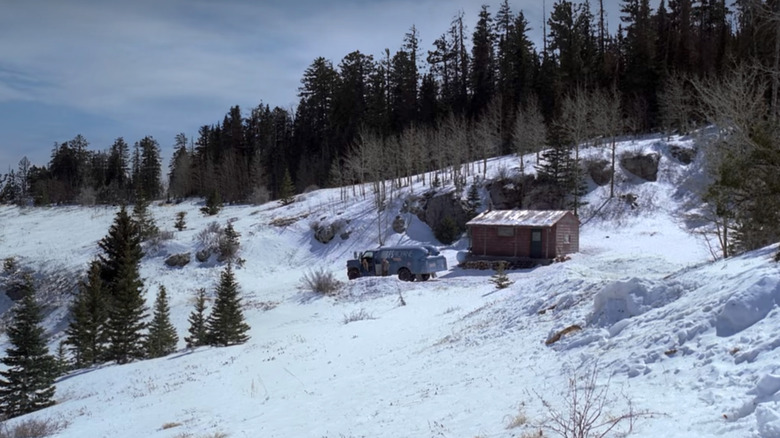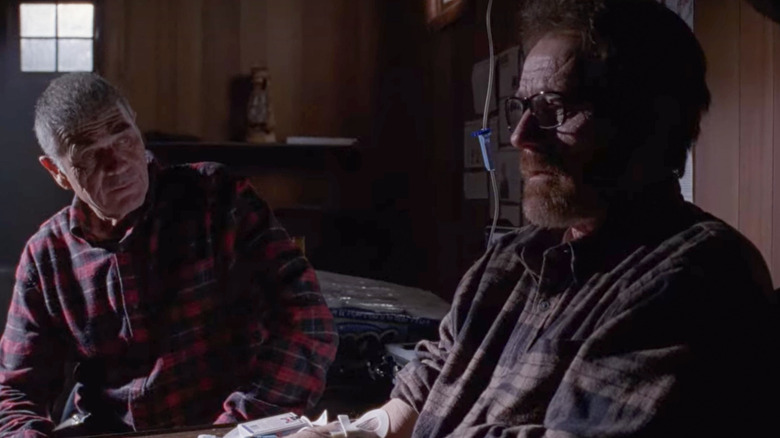Breaking Bad Built A Cabin 10,000 Feet Up A Mountain For Season 5
In "Breaking Bad" Season 5, Episode 15, "Granite State," Walter White (Bryan Cranston) is spirited away to New Hampshire in the tank of a propane truck by identity broker Ed (Robert Forster) and housed in a rustic cabin in the woods while he evades a nationwide manhunt. When showing the cabin to Walt, Ed touts the quiet environment and surrounding wilderness, telling Walt, "You got two acres up here, lots of woods, a nice warm place. Seems to me just the spot for a man to rest up, think on things."
All of the New Hampshire sequences were actually filmed in New Mexico, with the interior scenes shot on a sound stage and the exterior shots filmed about two miles above sea level at Sandia Peak, which sits about an hour's drive northeast of downtown Albuquerque.
In an AMC featurette about the making of the episode, Line producer Stewart Lyons said the production team carefully selected the location with an elevation above 10,000 feet, saying "It was a very challenging environment to work in, we chose that so that we would have snow, and we could sell the idea that it was in New Hampshire."
The cabin is where we see Walt's cancer finally overwhelm him
As the episode wears on, Walt is too restless to heed Ed's advice, stewing about the wrongs done to him by Jack's (Michael Bowen) gang and plotting ways to try and get money back to his wife and children in Albuquerque. Walt doesn't handle the solitude well, and his seething rage gets the better of him and he heads back to New Mexico to get his revenge in the series finale, "Felina."
In the featurette, series co-creator Peter Gould commented that "Granite State" marked Walt's slide from feared criminal mastermind to pitiable dying husk of a man. "This is the moment where we transform Walt from the Walt that we've been following to the Walt that we've seen in the future," Gould said.
Makeup department head Tarra Day explained the physical mechanisms her team used to make that transformation. "We are using some silicone cheek pieces," Day said. "We have a neck piece, he looks a little paler, so he really looks like the cancer's really starting to play a big role in making him not feel good."

